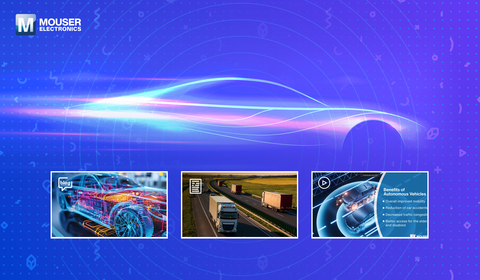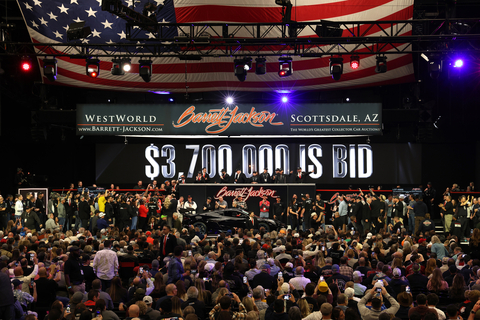

NPE2012 – the North American showcase for the world’s plastics industry – is shaping up to be the biggest ever, thanks to a combination of the growing use of plastics in the auto and other industries, as well as costs that have been saved by moving the expo from Chicago to Orlando, Florida.
“Many exhibitors are taking bigger booths than they did at our 2009 show in Chicago and plan to operate more equipment on the show floor. They’ve told us that the lower costs of exhibiting in Orlando have enabled them to justify investing in more space, while the simpler logistics and work rules there have encouraged them to bring more machinery,†said Gene Sanders, SPI senior vice president in charge of trade shows and conferences.
The triennial event, is hosted by SPI: The Plastics Industry Trade Association, and will run from April 1 to the April 5, 2012. The event is attracting a growing presence from the automotive sector, which is switching to plastics in order to reduce weight. Fuel tanks, wire harnesses, instrument panels, and even new molded windshields will be at the show. SPI is expecting a “surge†in visitors from countries like China and Brazil for the NPE2012 event. At NPE2009, 228 exhibitors came from China, including companies in four Chinese-sponsored multi-exhibitor pavilions—the most such pavilions ever at an NPE. Similarly, an increased number of Brazilian plastics professionals will be at NPE2012 to find ways to increase productivity, create new product values, and expand business with companies from around the world, says SPI.
Automotive Industries (AI) asked Bill Carteaux, president and CEO of SPI: The Plastics Industry Trade Association, what were some of the innovations for NPE2012 – apart from the new venue.
Carteaux: SPI has expanded the “Technology Central†concept that it introduced at NPE2009. Technology Central will also feature a Technology Theater, where exhibitors can schedule 30-minute presentations, product demonstrations, or seminars. A large segment of the exhibit floor and a wealth of adjacent meeting space will be dedicated to displaying or presenting new technology in formats that put multiple groupings of innovative developments together in one place. We have added new specialized technology pavilions, each made up of multiple exhibitors involved in a particular industry sector. They will include those for flexible vinyl, medical plastics, and adhesives and sealants. Another new pavilion, called the Processors & Suppliers Center, will be made up of plastics molding and extrusion firms, as well as companies that supply them. Another new pavilion will focus on advanced manufacturing techniques, such as rapid product development and automation. These are in addition to other technology pavilions returning after 2009. They include pavilions focusing on advanced materials, bioplastics, energy efficiency and conservation, sustainability, thermoforming, fluoropolymers, and moldmaking.
Throughout the NPE2012 trade show and the co-located events, two innovative technology sectors will be more strongly present than ever before at NPE. One of these will be bioplastics, which have been the target of extensive new investment and product development since NPE2009. The other will be alternative energy systems, including new battery systems for automotive, plastics for use by designers of wind turbines, and films, sheets, sealants, and other components for photovoltaic energy systems.
AI: How do you think the change of location has helped exhibitors and attendees?
Carteaux: Exhibitors have already purchased more exhibit space than was occupied at NPE2009. The reason for this enthusiastic response is that, in comparison with Chicago, Orlando provides cost and logistical advantages. A systematic comparison by SPI has indicated that the move to Orlando makes possible these average savings: 48% on utilities for booths; 19% on on-site hauling (“drayageâ€) and rigging services for exhibitors; 23% on lodging; and 11% on travel.
Savings on travel, food, and lodging will benefit attendees as well. These economies, combined with the greater proximity of Orlando to Latin America, seem certain to result in a significant increase in Latin American attendance.
At recent NPEs, Latin Americans have already accounted for more than one-fourth of international attendance. The relocation to Orlando strongly favors further growth. Orlando is served by nonstop flights from twelve Latin American destinations, and there are 65 direct flights to Miami from destinations in Latin America and the Caribbean. Airfare and travel times are less than with flights to Chicago. In addition to this influx from Latin America, we are looking forward to once again attracting international attendees from more than 100 countries elsewhere in the world.
AI: What are some of the automotive-related technologies that will be highlighted at NPE2012?
Carteaux: It is difficult to generalize about innovative plastics technologies for automotive, simply because the components in which plastics are used, or could be used, are vast in number and in the diversity of their performance requirements. Certain themes, however, will be evident in any NPE2012 exhibit or conference presentation that focuses on automotive.
Obviously one of these will be weight reduction for fuel economy—that’s a perennial. Similarly, automotive manufacturers can always expect to discover new technologies that save on component production costs through such techniques as parts consolidation, multi-material molding or extrusion, and elimination of painting in favor of cosmetically enhanced part surfaces. Typically these innovations require improvements in raw materials, processing techniques, and toolmaking—all of which will be amply represented at NPE2012. Specific innovations for automotive applications that one can expect to discover at NPE2012 include new biopolymer compounds that can help automotive manufacturers increase the “green’ content of vehicles; replacement of the diverse materials often found in multi-part components with single-material systems that facilitate recycling—or systems that are recyclable because they consist of compatible polymers, such as rigid polypropylene combined with a thermoplastic polyolefin elastomer; and replacement of EPDM and other thermoset rubbers with TPEs, reducing fabrication costs and permitting parts consolidation through coextrusion or over-molding with other thermoplastics.
AI: What are some of the reasons why NPE2012 is a must-attend for automotive companies?
Carteaux: Among companies that design and manufacture parts or subassemblies for automotive use, competition is more intense than ever. Yes, the industry is recovering, but it is a slow recovery, and in North America especially, the market for automotive components is still smaller than it was before the great recession of 2007-2009. To stay competitive in this market—better, to prevail in it—manufacturers need to cut costs, boost productivity, enhance product quality and consistency, and, wherever possible, develop capabilities and services that set it apart from competing companies. NPE2012 will be a showcase for the latest plastics technologies available for helping to meet these goals. The next opportunity to see all these developments in one place at one time will not come along in the United States until three years later—at NPE2015.
AI: What is the current state of the plastics industry in the US and what role does it play in the automotive sector?
Virtually every type of plastics material system is in commercial use for automotive components, involving practically every type of processing equipment. More than 330 pounds of plastics are used in the typical vehicle.
Plastics is the fifth-largest U.S. manufacturing industry, with current annualized shipments amounting to around $350-billion. In 2009 (the last year for which whole-year figures are available), suppliers to the industry accounted for an additional $73-billion in shipments. The total number of persons employed by the plastics products and supply sectors was 1.4 million jobs. There were 17,348 plastics facilities operating throughout the country. Manufacturers of plastics products spent $7.8-billion on capital equipment.
Plastics manufacturers are benefiting from the recovery of the U.S. economy and are particularly encouraged by the growth of export business. At the same time, many firms, still cautious about hiring additional workers, are looking to technology to increase productivity. Both factors have stimulated investment in capital equipment and promise to attract to NPE2012 plastics professionals with an interest in, and a company mandate for, buying new plastics processing systems.
AI: How will NPE2012 help address the new challenges facing the industry?
Carteaux: NPE2012 will provide attendees with an opportunity to discover the latest technologies for solving problems involving cost control, productivity, vehicle weight reduction, sustainability, passenger safety, new consumer values, proliferation of electronic devices, and other critical factors for competing in today’s automotive industry.
Parallel events
Three events will be co-located with NPE2012.
ANTEC 2012 is the world’s largest plastics technical conference. The 201l edition of this annual event provided attendees from 40 countries with access to more than 700 original, peer-reviewed technical presentations covering every sector of the plastics industry.
SPI’s ‘Business of Plastics’ conference will begin with a keynote presentation on Sunday, April 1 and be followed by half-day sessions on Monday through Thursday. Presenters will focus on the business implications of their topics rather than conducting a technical discussion. SPI is planning for presentations on timely topics of broad interest to plastics professionals, such as bioplastics, sustainability, medical and healthcare markets, and issues involving regulation, safety, or industry advocacy.
The 2nd International Plastics Design Competition is open to entrants from all nations. The competition will showcase innovative applications by designers and processors serving appliance, automotive, medical device, packaging, and other consumer and industrial markets.

















More Stories
Getac on AI’s transformative impact on automotive production and aftersales
Automechanika Shanghai 2024
Contechs appoints Christopher Hilts as US Head of Business Development